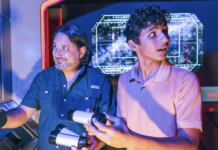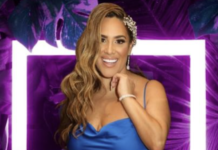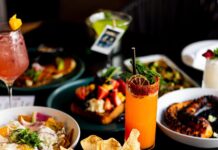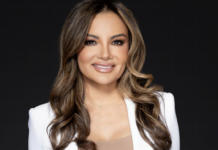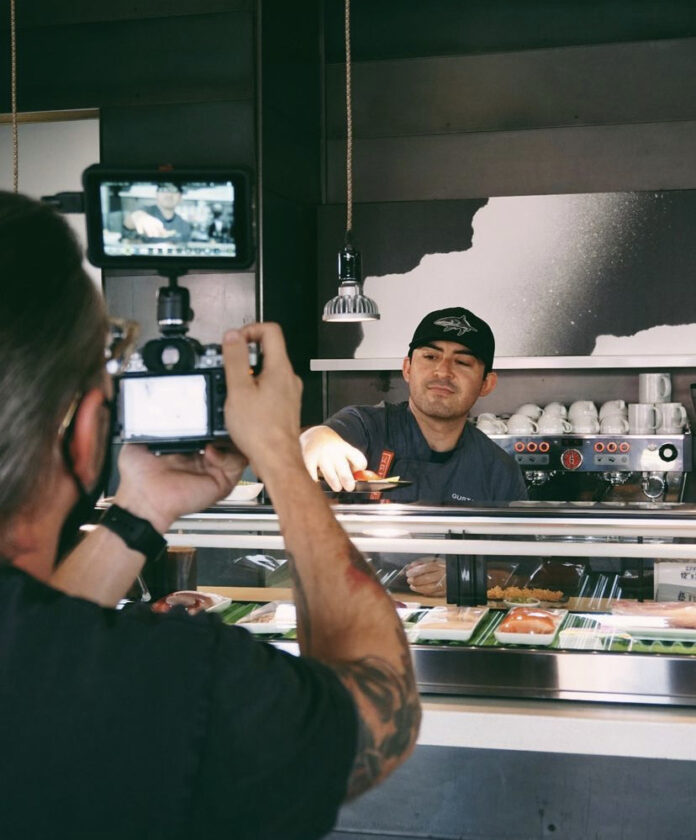Located in the warehouse district near downtown Phoenix, Kaizen has taken the Valley’s Sushi and food scene by storm. Chef Gustavo Munoz has spearheaded the innovative sushi restaurant by merging traditional Japanese sushi with innovative flavors from Latin America. VivaPhoenix sat down with Chef Gustavo Munoz to find out more about his beginnings as a Sushi Chef, how Kaizen came to be and what is next for what has been dubbed Phoenix’s Best New Sushi Restaurant.
Thank you so much for agreeing to this interview with VivaPhoenix. Could you tell us your first and last name and your position at Kaizen?
Thank you for having me. My name is Gustavo Muñoz and I’m the Head Sushi Chef for Kaizen Phoenix.
Could you tell us a little about yourself and your beginning in the food industry?
Sure. Well, I started at RA (Sushi) about 10 years ago and that was my main job. But at a point, I realized that I wasn’t going to learn much there because they have a set menu. So I started getting side jobs and working part-time in many different restaurants in the valley.
When did your passion for food begin?
I want to say my passion for food began back home in Mexico watching my Grandma, Mom, and Aunts cook. I didn’t realize it was my passion until I started working in the kitchen.
It was also out of necessity, I needed a job. I went to apply to be part of the prep kitchen at RA but they weren’t hiring at the time. But then the Sushi Chef saw me and said “Hey! we need people, would you like to try it?” and at that point, I had no experience whatsoever in the kitchen or in Sushi. But I said “Sure”, and I started doing easy stuff like prepping, cutting rolls, and stuff like that. That’s how it all began.
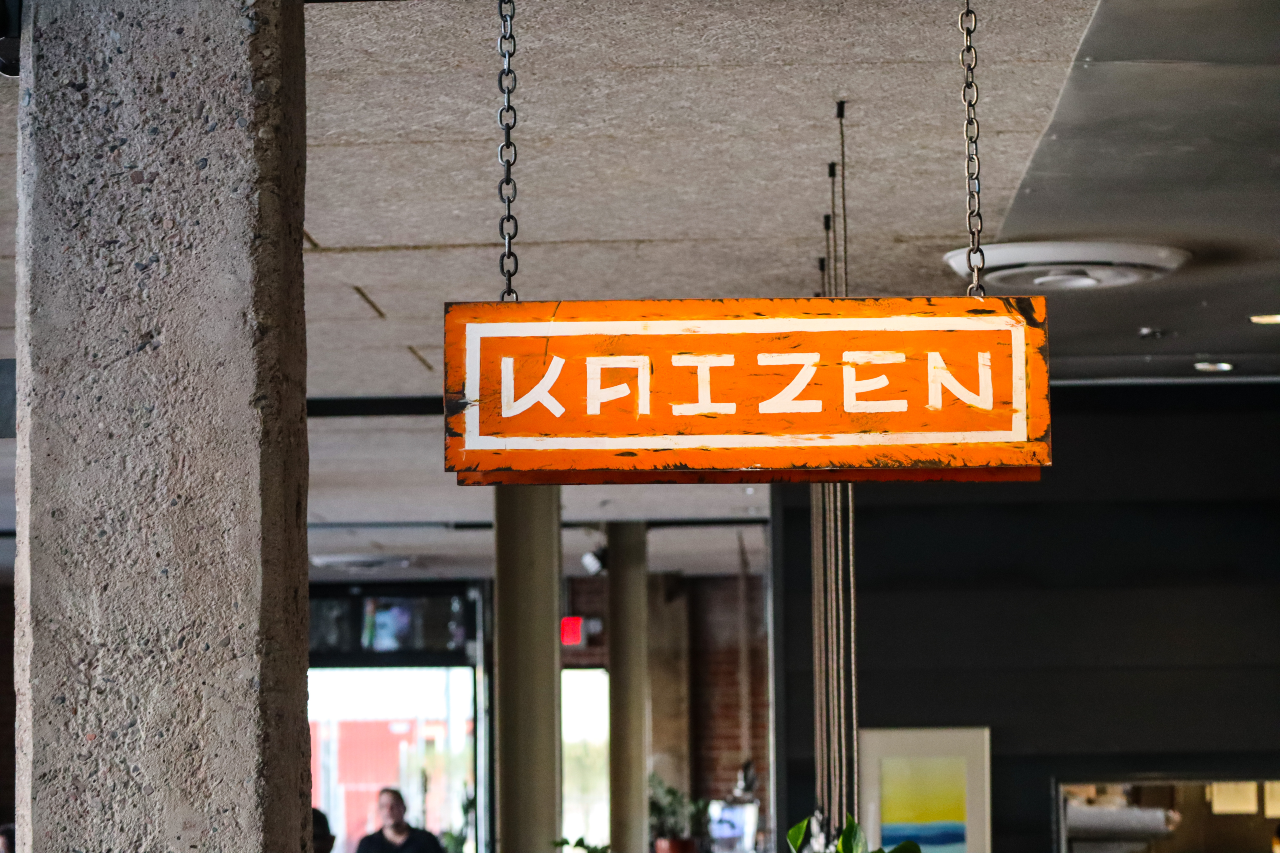
How did you end up working at Kaizen?
So originally there were three of us working at RA Sushi in Tempe. Clay, who’s currently the head chef of the catering kitchen Conceptually Social, my wife, and myself.
One day Clay started working for Conceptually Social and he brought in my wife to work with them as well. One of the owners, Kyu Utsunomiya, who is half Japanese and half American, always wanted to have a sushi concept to honor his roots and his background.
So, Clay and my wife talked to Kyu and mentioned me. I sat down with Kyu, and Troy (Watkins), who’s the other owner of the company, and they pitched the idea of creating a Sushi concept. They pretty much left the concept all to me, because they had no experience whatsoever, other than, you know, Kyu being Japanese and growing up eating Japanese food.
So that’s when I decided to leave RA and come work for Conceptually Social. I would function as a Sushi Chef for half of my day supplying our accounts, our corporate accounts, private events, and anyone that wanted sushi. After I was done with that, I would R & D (Research and Development). I would try to create, and work on the concept and create dishes, test them out. I was focusing on the menu and the kitchen side of the concept and they started looking for a spot and just the whole structure of building it up and that’s how it all came about.
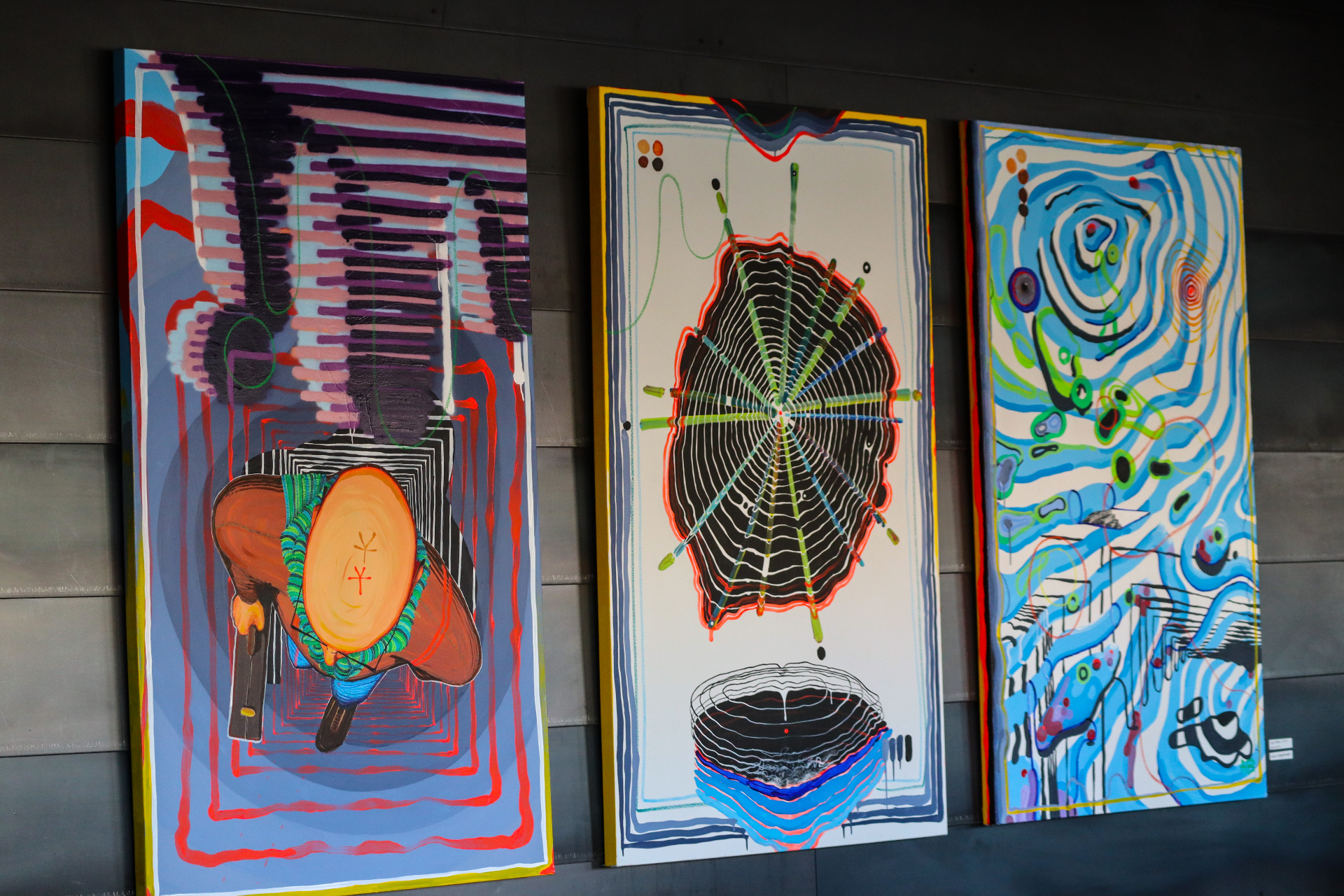
You said that the reason you left RA was that you felt limited by the menu. So the idea of you being able to control the menu and what you could have in it was really attractive to you. How long did it take for you to curate and create the menu and be comfortable with what you were willing to put out?
So the way I view RA is that it is a school for beginner sushi chefs, for apprentices. It has a lot to offer, you know, it has a structure, the means, everything for you to learn the basics. Once you get there, if you want to keep growing, you have to branch out, you have to look at other spots that offer different fish, different ideas, and innovation.
So to create the menu it takes about it…I guess it depends on the person. This was my first experience creating if you will. Every Sushi chef in the middle of the day, if it’s not busy, we try to make something with what we have. So it was a little challenging because it was my first time creating a whole menu. But I had a lot of help from past chefs, and past restaurants that I’ve worked with. So it was easy for me to grab a little bit from everyone and everywhere that I’ve been and interacted with and come up with something. So it took about a year year and a half because I wasn’t committed full time to it due to also working part-time in the catering kitchen.
But the interesting thing about Kaizen is that we’re always changing. We’re always innovating. We’ve kept the main dishes, but we’re also adding to the menu and bringing in new stuff and finding new ways and new techniques and new dishes to work with. So it’s really cool.
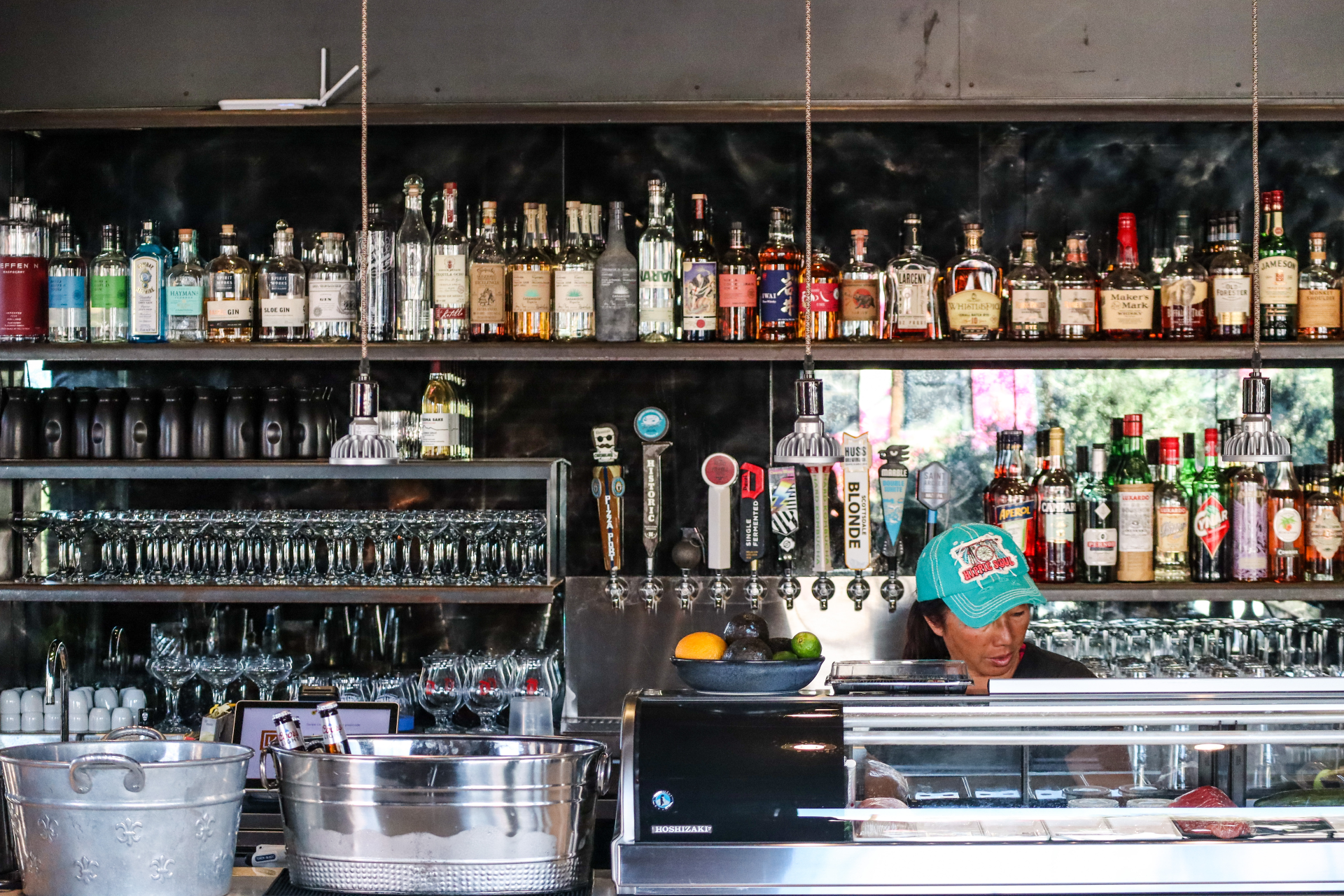
Kaizen opened in June of 2020, while the world was still adjusting to the pandemic, and at the time Kaizen was only open for curbside pick up and delivery, did not having customers in the restaurant for that period of time affect you in any way?
It was actually better. It’s actually better because we controlled a lot of the operations, the day-to-day operations. For instance when it came to prep. When we started we were only open two days a week. So you have to kind of like think about “how much are we going to sell?” because we don’t want to waste food. When you work with Sushi ingredients and fresh fish you have to get as close as possible to the amount needed per day so that you don’t have too much waste, or in my opinion, so that you don’t have to freeze stuff.
I try to have fresh fish all the time, so it was easy in that sense. It was also easy for us in the kitchen because everyone that started in the concept had worked together before, so we knew each other. And it was fun. It was really fun.
When you say it’s easier to control, is it because when the restaurant is open to in-person dining, you never know how many people will show up?
Exactly.
Several local publications like the Phoenix New Times have named Kaizen their best new Sushi restaurant, what does that mean to you as the Head Chef?
I try not to let it get to my head. I think it’s a compliment. I think the recognition is great. I think they saw the potential and I also think that they saw that we were different. That, in my opinion, is what sets us apart. Our quality ingredients, customer service, and just our mindset, Kaizen, always improving and innovating. I think that’s what sets us apart. I think that’s why we were named the best new Sushi restaurant.
I’ve seen on your social media pages that your seafood is brought in from countries such as Japan and New Zealand. How important is it to have high-quality ingredients?
Well, when you’re working with Sushi it’s said that fresh fish, or right out of the seas, is best, but it’s not always the case.
With some fish, it’s better to age and let it rest. But it’s definitely important to control the quality and control the amounts you get. I try to bring in the amount that I think I’m going to use for the day, or for the next two days and cut what I think I’m going to use so that I can keep having that fresh fish every single day.
Right now because we’ve grown so much so fast, we’re always trying to keep up. For me, it’s very important to work with quality fish. That’s why I’m always trying to get the best. We started with the salmon that everyone works with, Atlantic, Canadian, Scottish, but we saw that it wasn’t what we wanted. So we started bringing in Ora King Salmon from New Zealand, which in my opinion is probably the best-farmed salmon out there, and the improvement in quality was substantial. The same goes for Tuna. I try to bring in Bluefin Tuna every now and then and on the weekends mainly but we always have Big Eye (Tuna). Another example of quality is our King Crab. Everything that we do we try to make it in-house and have it as fresh as possible.
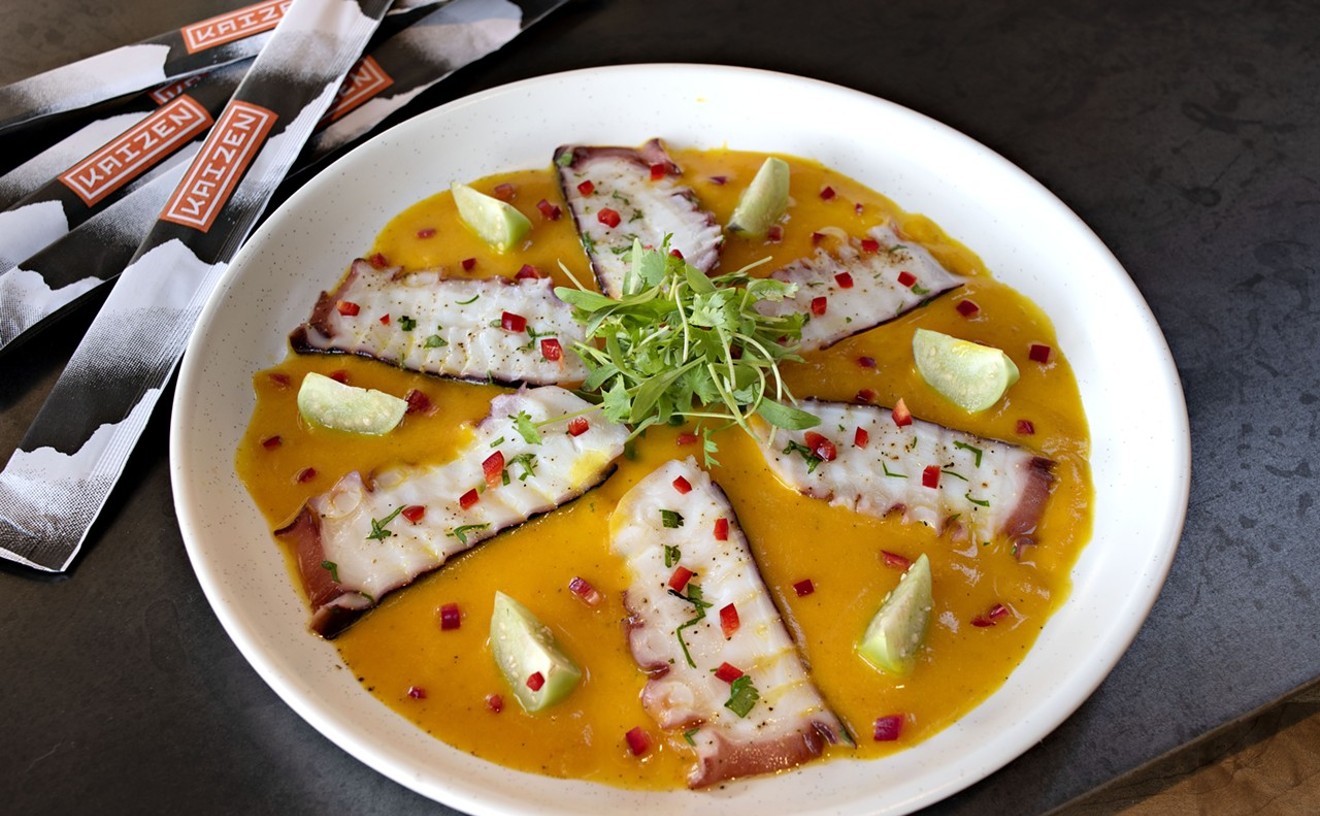
Your main dishes at Kaizen have a big Latin influence, for example, the Peruvian-Japanese Tiradito, the Mexican Aguachile, and Pulpo Asado. What influenced you to bring these dishes to Kaizen’s menu?
So the idea was to give the Valley a different option, not to just open another sushi restaurant that would have you know, the California (Rolls) and the Rainbows, but to give them something extra. There’s nothing wrong with the California Rolls, they’re great, everyone loves it. But there’s a point where you’re like “Okay, I’ve had that I want to try something else.”
When I started the concept was what can I do to attract our guests, our customers? And my idea was to merge my culture, tradition, background, the stuff that I grew up eating, and what I know and what I’ve been working with for the last 10 years.
A few chefs have previously done it and it has been great, you know, it has been successful. So I wanted to try that. I wanted to merge that. And just, I knew that it was going to have a huge impact because no one was doing it in the Valley and it has paid off. I always wanted to work with Mexican and Latin American ingredients and dishes. So it was a perfect opportunity.
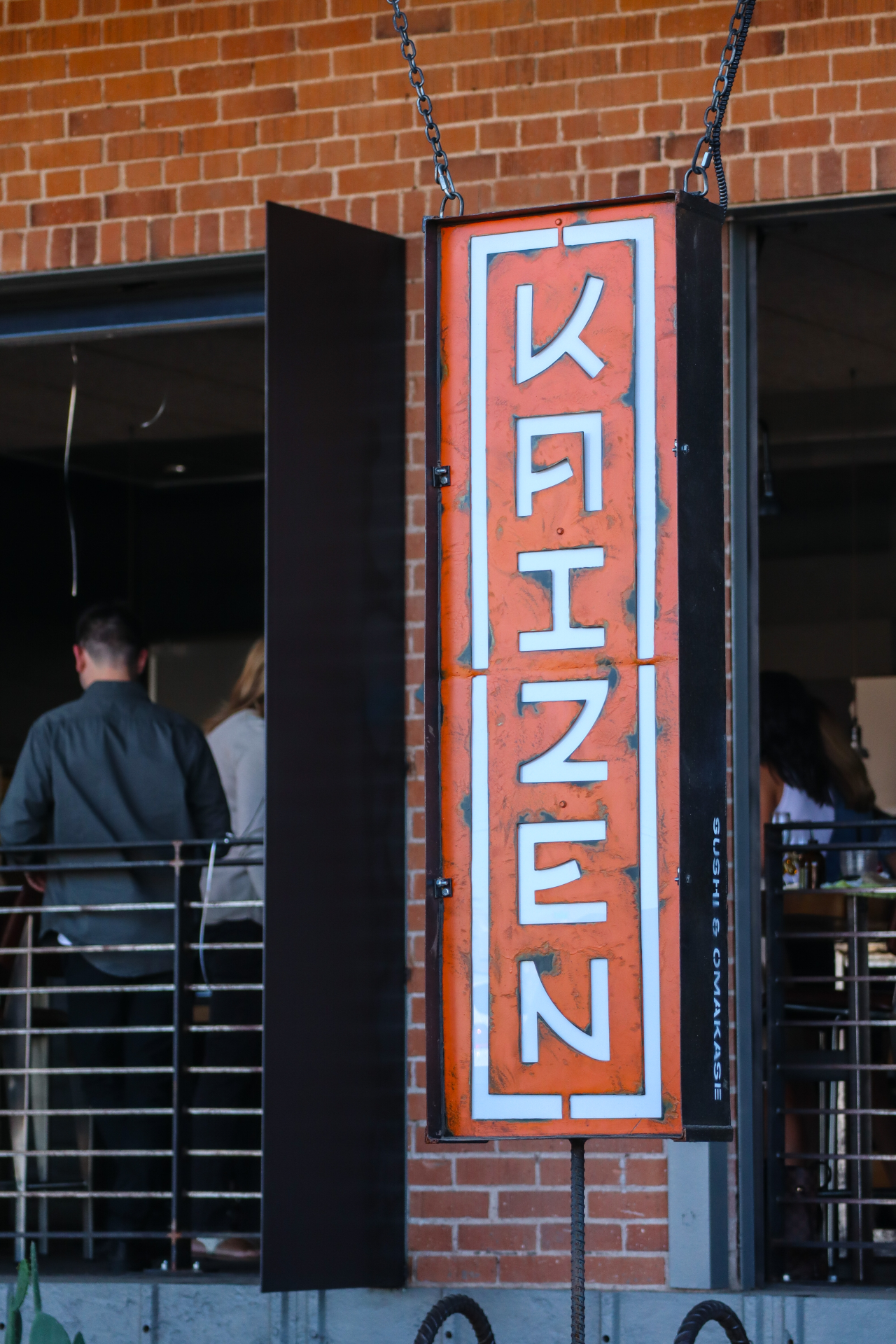
You mentioned that Kaizen means continuous improvement. Are there any upcoming new dishes we should be excited about?
Yes. So winter is coming, even here in Arizona. We get a little cold here, right? At least for a couple of months. So I’m working on a few items.
We’re gonna have Ramen with a Mexican touch. We’re going to have Japanese Curry, also influenced by Mexico. We’re also bringing in American Wagyu and just working on expanding our menu, especially the hot menu items because of the colder weather that is coming up.
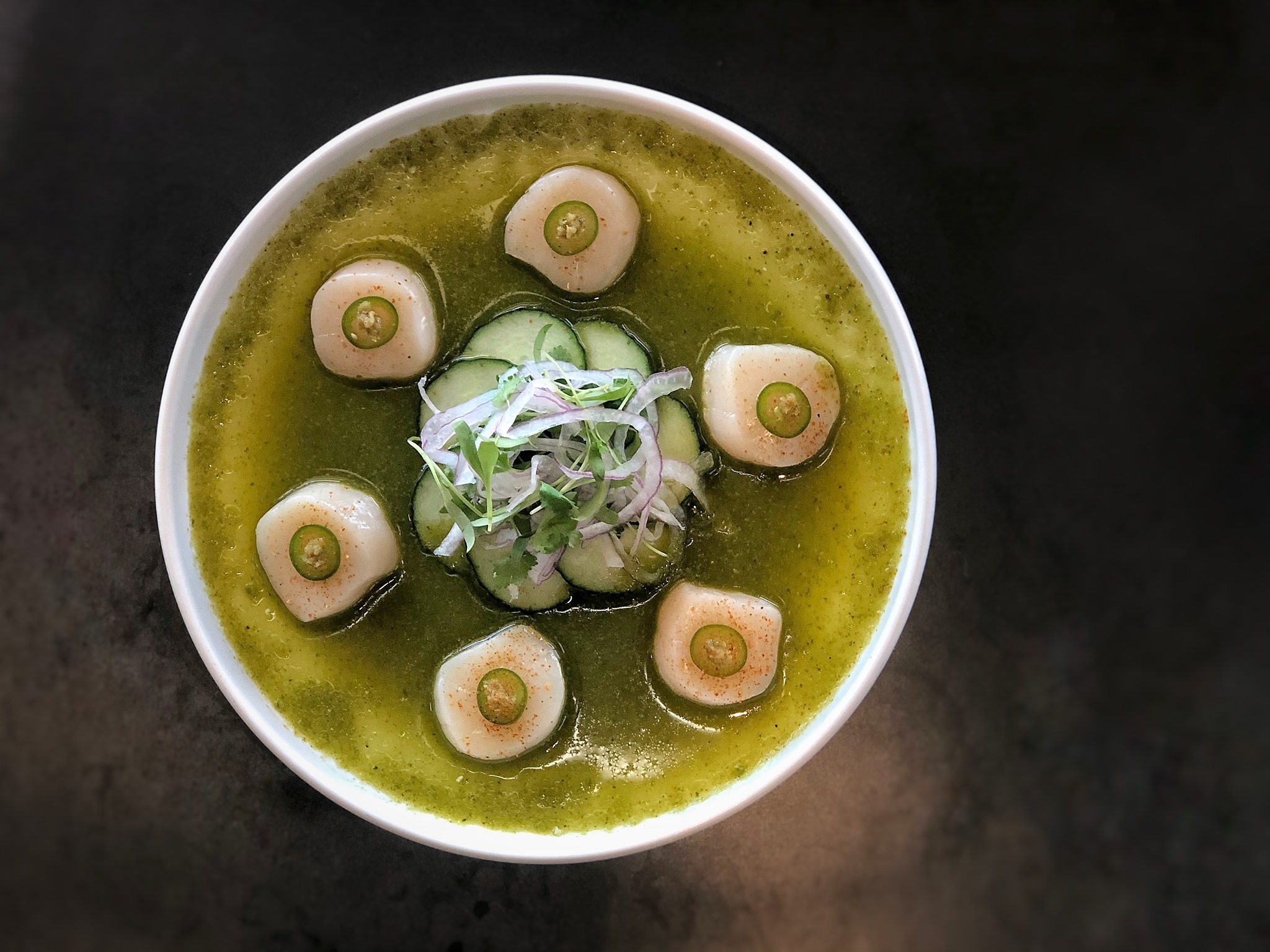
Are there any goals you or Kaizen hope to accomplish heading into 2022?
I guess because of our success, and of our fast growth, we as a company would like to find a space only for Kaizen. The space will help us keep growing, extend our hours, and possibly open for lunch. So, as a company, I think that’s our priority right now. We’re looking for a place to call our home. I think that that would set us up and project us to the next stage to keep growing.
Personally, I just want to keep learning. Keep working, keep doing what I’m doing and just stay humble. I want to keep creating, keep innovating, and as long as my guests and my customers are happy, that’s what’s is all about.
Chef Gustavo, thank you for your time.
Thank you for having me.
[This interview has been edited for length and clarity]




